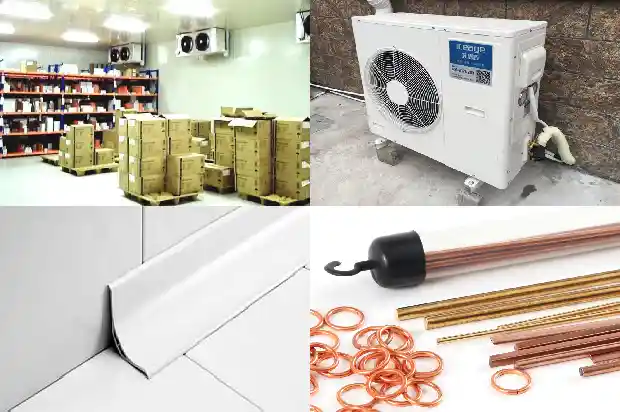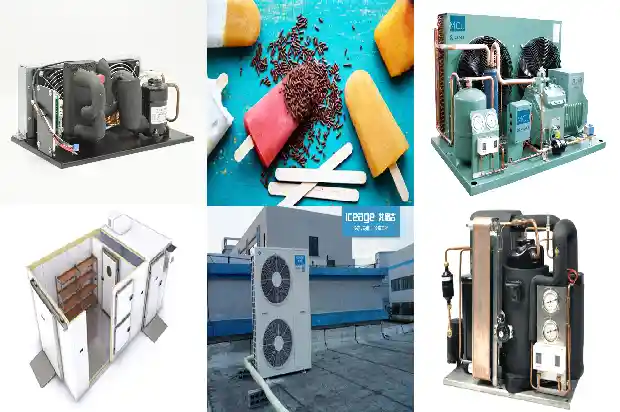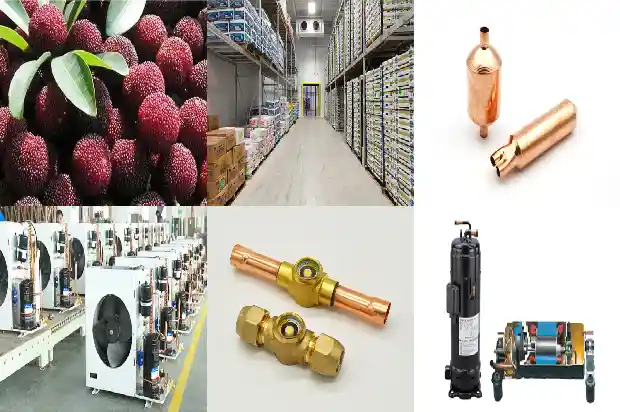Introduction to Precooling Methods for Fruits and Vegetables
2024-09-13
Cold storage is already the most important facility for us to store fruits, vegetables and food at present. In order to prolong the preservation purpose and reduce operating costs, pre-cooling is an important link in the cold chain. Pre-cooling is to rapidly cool fruits and vegetables after picking, and the temperature is close to the storage temperature. There are usually three methods:
Vacuum pre-cooling: According to the physical characteristic that the boiling point of water also decreases as the pressure decreases, the pre-cooled food is placed in a vacuum tank and evacuated. When the pressure is reduced to a certain value, the moisture on the surface of the food begins to evaporate and absorbs the latent heat of vaporization. The method of cooling the food itself is the vacuum pre-cooling method.
Cold water pre-cooling: Putting fruits and vegetables into a cooling tank for cooling and spraying cooling with cold water are more widely used in the United States. In Japan, because people are more disgusted with water cut-off and wet cardboard boxes, it is not practical.
Air pre-cooling: In the pre-cooling warehouse, align the ventilation holes of the cartons and stack them closely together to make a wall. By making a differential pressure on both sides of the wall in some way, the cold air passes through the inside of the carton and directly cools fruits and vegetables. Directly cool fruits and vegetables.
Vacuum pre-cooling: According to the physical characteristic that the boiling point of water also decreases as the pressure decreases, the pre-cooled food is placed in a vacuum tank and evacuated. When the pressure is reduced to a certain value, the moisture on the surface of the food begins to evaporate and absorbs the latent heat of vaporization. The method of cooling the food itself is the vacuum pre-cooling method.
Cold water pre-cooling: Putting fruits and vegetables into a cooling tank for cooling and spraying cooling with cold water are more widely used in the United States. In Japan, because people are more disgusted with water cut-off and wet cardboard boxes, it is not practical.


Air pre-cooling: In the pre-cooling warehouse, align the ventilation holes of the cartons and stack them closely together to make a wall. By making a differential pressure on both sides of the wall in some way, the cold air passes through the inside of the carton and directly cools fruits and vegetables. Directly cool fruits and vegetables.

Related Articles
- Introduction to Inspection and Handling Methods for Refrigerant Leak in Cold Storage
- Introduction to Control Valves in Refrigeration Systems
- Introduction to Basic Types of Cold Storage
- Introduction to Lithium Bromide Absorption Chillers
- Introduction to the Advantages of Dual - temperature Cold Storage
- Introduction to Various Water Tanks in Air - conditioning Systems
- Introduction to the Cleaning Processes and Methods of Heat Exchangers and Cooling Towers
- Introduction to Six Kinds of Two-stage Compression Refrigeration Systems
- Introduction to Key Points of Compressor Grouping in Quick-freezing Cold Storage
- Introduction to the Construction and Features of Cold Storage in Cold Chain Logistics
- All-round Introduction to Condensers and Evaporators!
- Introduction to Vapor Barrier of Cold Storage and Moisture Protection of Equipment
- Introduction to Oil Collector in Refrigeration System
- Technical Introduction of Process Cooling Water System
- Introduction to Air-cooled Chiller
- Introduction to Five Classification Functions of Cold Storage Installation for Refrigeration
- Introduction to the Relationship between Refrigerants and Cold Storage Temperatures
- Introduction to Types of Condensers in Cold Storage
